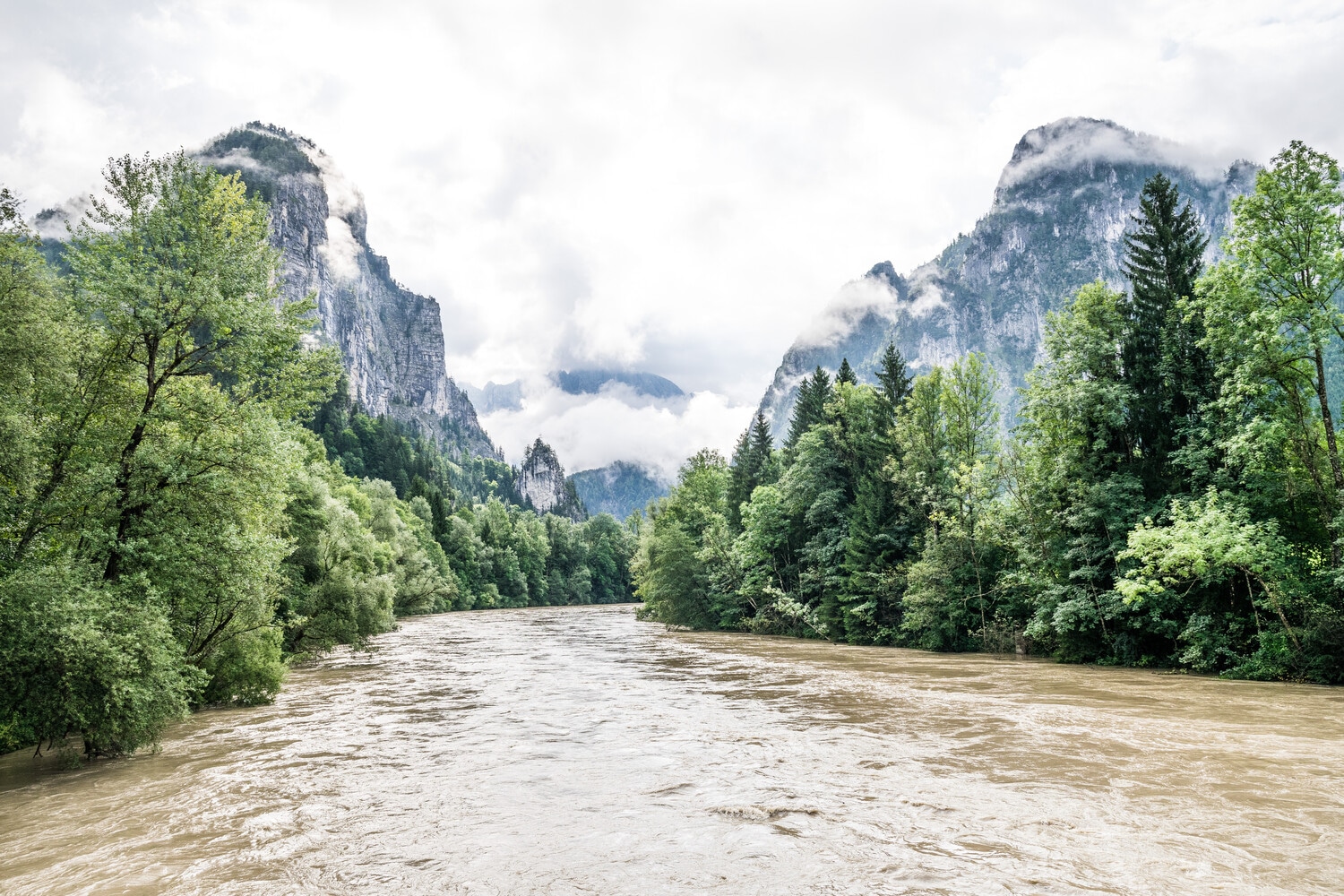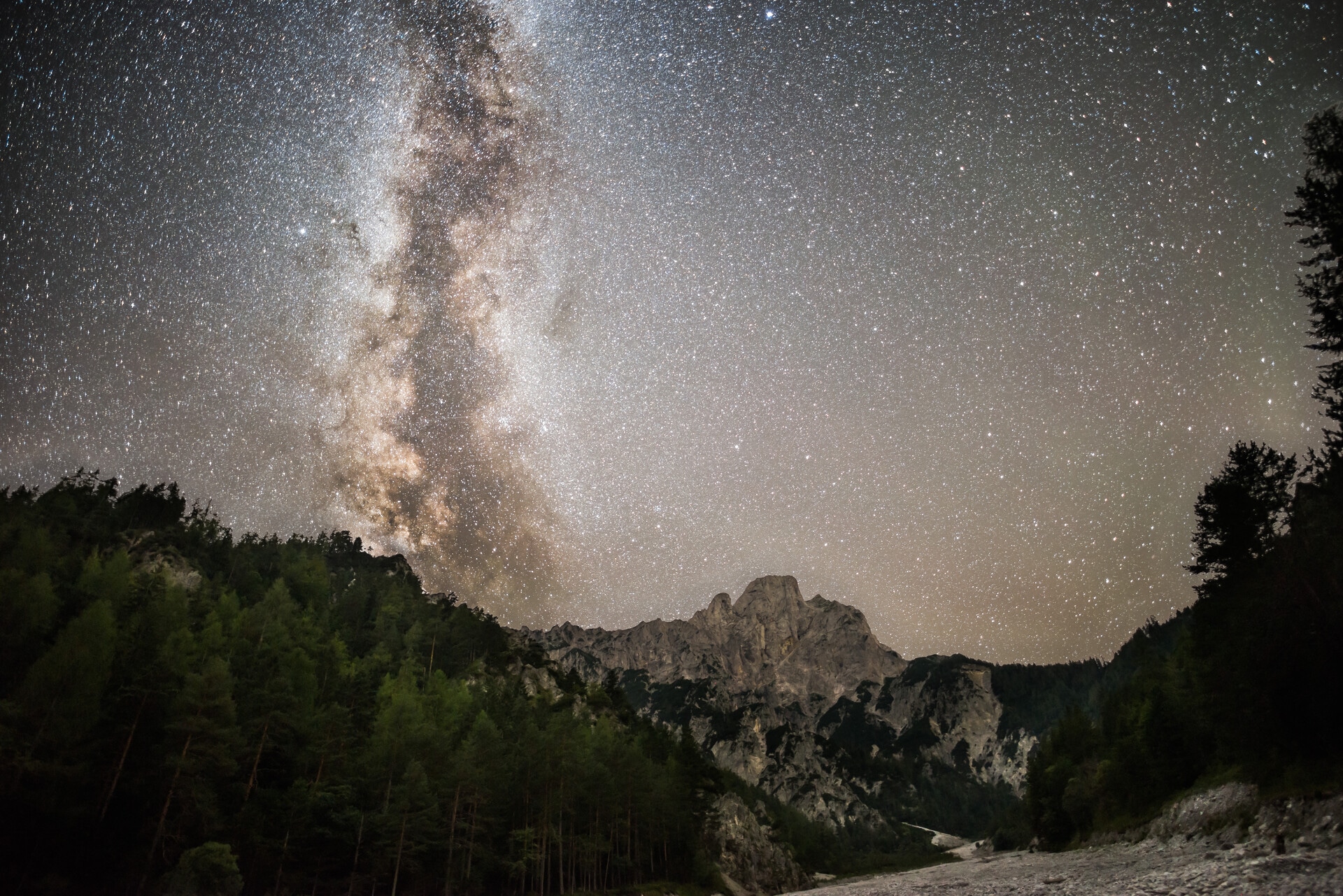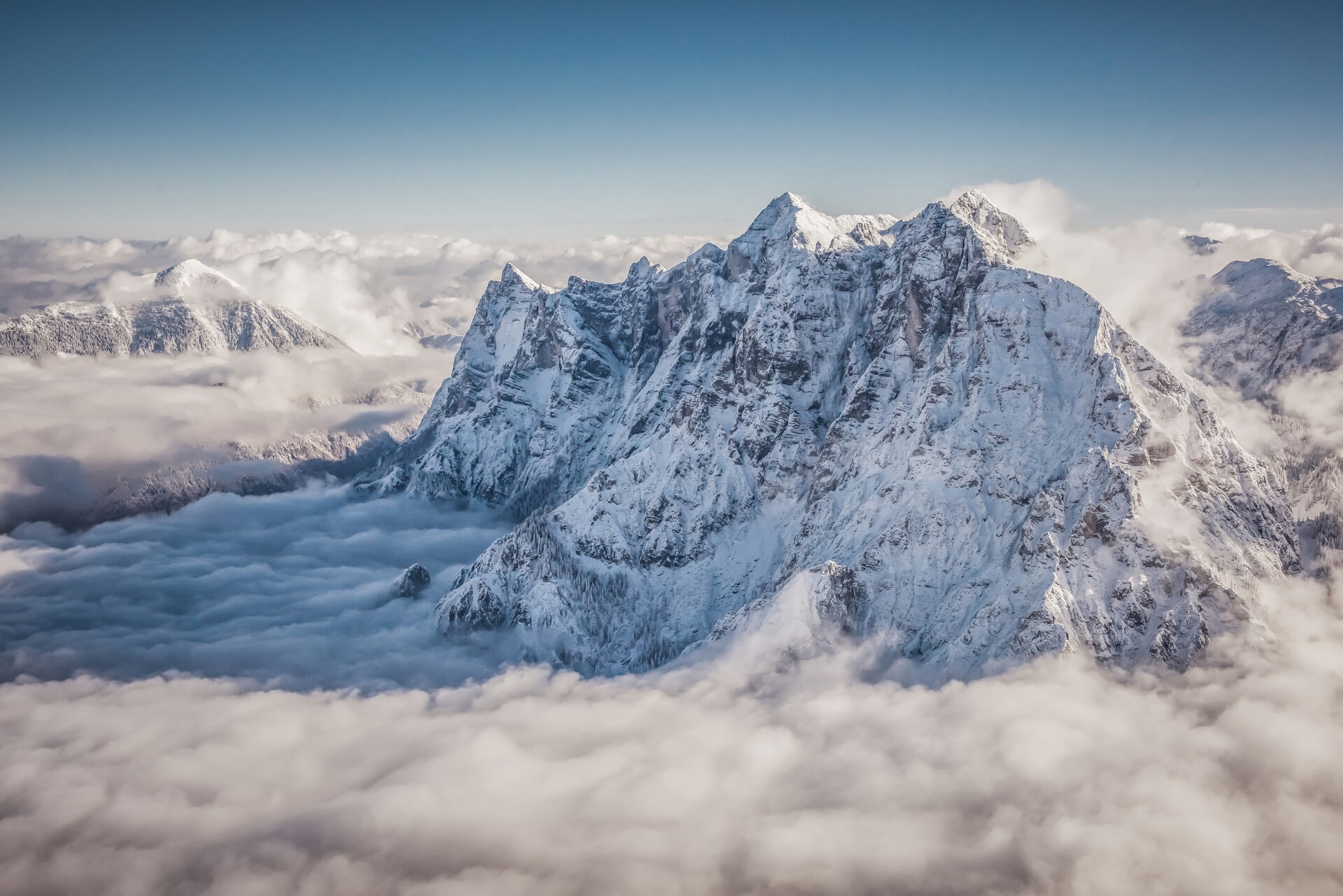


Our landscape is wonderfully untamed; wild water and steep rock. Enns Valley in the Gesäuse forms one of the most impressive gorges in the Eastern Alps, including towering rock faces. The accentuated topography and geographical location goes hand in hand with a great biodiversity. There is no place in Austria with more endemic species.
We are a national park according to IUCN II criteria, i.e. our main task is the free development of nature (wilderness). The habitats and landscapes are strongly protected and humans are not allowed to interfere. Forestry, gravel mining and the like are prohibited as well. There is only one exception to the rule – alpine pastures.
You can really experience the Gesäuse National Park on foot or by raft on the Enns. There are visitor centres at the Weidendom and in Gstatterboden. Enjoy our themed trails, hike along the numerous marked paths or take part in a guided tour. Tours are available for all requirements, from barrier-free walking trails to the most difficult climbing tours. The most productive way to immerse yourself is to book a National Park Ranger:in as your individual guide.
As a visitor you are constantly "under observation" by the many animal inhabitants of the Gesäuse National Park. If you are careful and attentive as a visitor, you have a good chance of seeing one or two of your "observers" yourself. A large number of butterflies, weaver's weeds and aquatic creatures can often be observed. Woodpeckers and other birds, especially golden eagles, which are permanent residents of the Gesäuse, can also be spotted frequently. Of the mammals, you are very likely to encounter chamois in the mountains, but for an encounter with a deer or marmot you need a bit more luck. The sighting of very rare animals, such as the well-camouflaged lynx, is purely a matter of luck and reserved for very few people. The national park administration offers guided tours of selected animal species that you don't normally get to see, such as the capercaillie.
The most important commandment: Appreciate and respect nature! There are also prohibitions such as camping, making fires, parking off the parking lots, letting dogs run free or launching/landing drones and entering caves. Of course it is forbidden to damage or take plants or disturb animals. Detailed information can be found in the description of the individual activities under "Discover National Park".
In principle, free access to the forest and the mountain region by foot is permitted in all of Austria. However, we are asking you to stay on the marked paths in order to protect the rare species of Gesäuse National Park.
Entering the shore areas along Enns river and Johnsbach creek is strictly prohibited as they are one of the last breeding grounds for sandpipers (exception: specially marked areas).
The borders are marked in the various hiking maps and can also be found in the Geo Information System of the Land Steiermark (GIS Steiermark). In nature, the national park borders are marked at all access points (roads and paths).
There are no particularly dangerous animals. Large predators such as golden eagles or lynx do not attack humans. However, you should watch out for adders. These snakes are often found in the mountains and are poisonous but not aggressive. Ticks, which can transmit diseases like encephalitis or borreliosis, are especially common off the paths in the bushes.
Very serious are the dangers of the mountains like avalanches, rockfall or fog, which makes orientation difficult. Rapid changes in weather and storms must be expected. Please note that you are walking in alpine terrain, that most of the trails require surefootedness and that there is a risk of falling in open terrain as well as on the more difficult trails.
A special danger comes from the trees. In the national park forests can develop freely; rotten branches and dead trees are part of it. Avoid the proximity of these trees and staying in the forest or under trees in strong winds or storms!
The majority of the area belongs to Land Steiermark, a small part is private property. The national park is administered by the Gesäuse National Park GmbH, which is owned half by the Republic of Austria and half by the Land Steiermark.